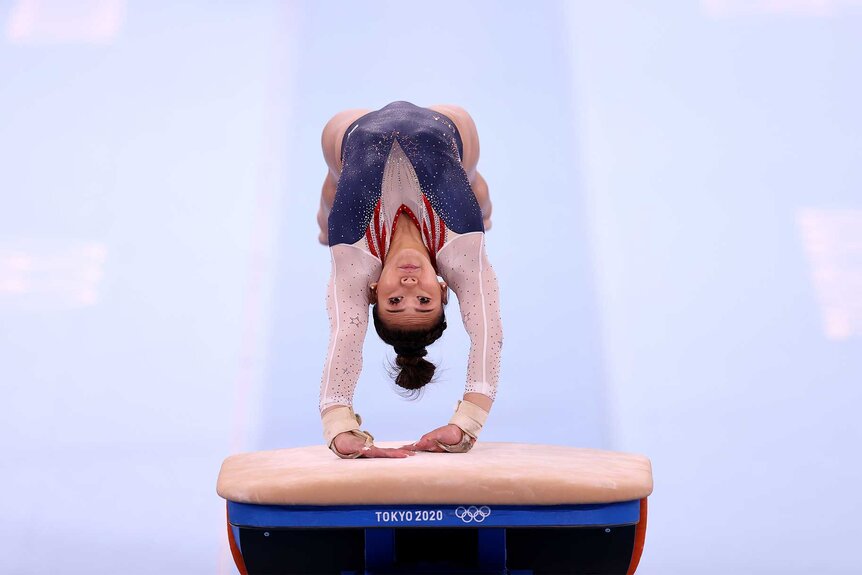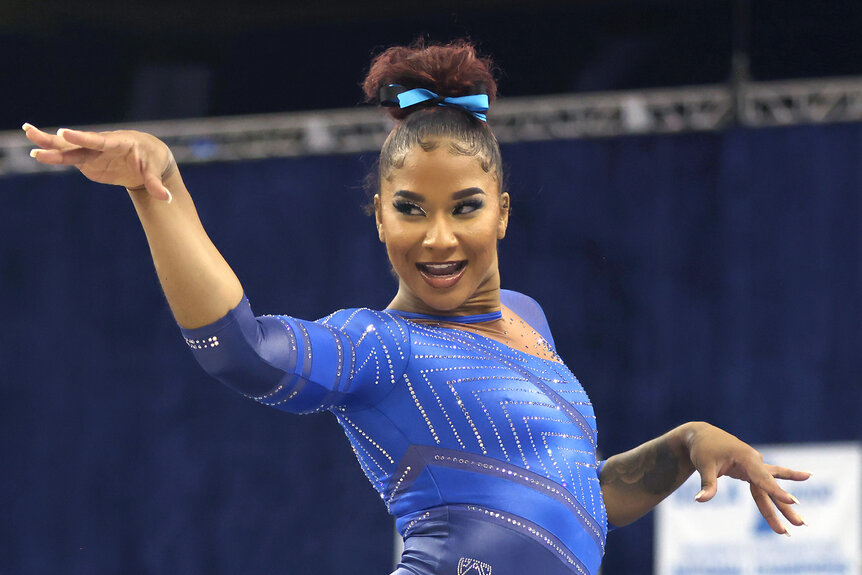Create a free profile to get unlimited access to exclusive show news, updates, and more!
What’s the Difference Between Rhythmic and Artistic Gymnastics? Everything to Know
With different events, scoring methods and overall goals, these two types of gymnastics have some distinct differences.
Every Olympic Summer Games, fans everywhere find themselves immersed in the world of gymnastics, becoming amateur judges as they rate each gravity-defying flip, twist and turn from the comfort of their couch.
But to fully understand gymnastics, it’s important to realize that there are two very distinct types of the sport: rhythmic gymnastics and artistic gymnastics.
Each will be a part of the 2024 Paris Olympic Games, but they have some very noticeable differences.
RELATED: What Are the Twisties in Gymnastics?
What events are in Rhythmic and Artistic Gymnastics?
Artistic gymnastics — which has attracted top U.S. competitors like Simone Biles, Shannon Miller and Paul Hamm — requires a gymnast to perform a series of acrobatic skills using various equipment and has been a fixture of the games since 1896, according to Olympics.com.
It’s open to both men and women and participants can compete in a team competition and individual all-around.
Women’s artistic gymnastics is made up of four events, including the beam, vault, uneven bars, and floor exercise. It often involves the athlete performing challenging flips, twists or spins mid-air as they spring off from or land on the various equipment used in each event. For more on the scores and difficulty, check out our guide here.
In men’s artistic gymnastics there are six events. These include the rings, vault, pommel horse, horizontal bar, parallel bars and floor exercise.
Rhythmic Gymnastics
On the other hand, in rhythmic gymnastics, gymnasts perform a choreographed floor routine using one of four types of apparatus or prop: ball, hoop, clubs, ribbon. They must keep the prop they choose moving at all times during the routine. Together, with their selected apparatus, the gymnast creates a flowing routine that incorporates elements of dance to the backdrop of music and often shows off their agility, strength, and endurance level.
While they incorporate some gymnastic skills as well like walkovers or cartwheels, they do not perform flips or complex aerial moves like the floor exercise in artistic gymnastics, according to Mental Floss.
“Rhythmic gymnastics is much more acrobatic dance or ballet than artistic gymnastics—and their training is heavily into ballet,” former gymnast and coach Valorie Kondos Field told the outlet.
At this time, rhythmic gymnastics — which has been a part of the games since 1984 — is a female-only event, according to Olympics.com. It also consists of just two events, the individual competition and team event.
During the team event, five gymnasts work together in two separate performances, each coordinated to music. For the first routine, all five members must use the same prop, but in the second routine they can mix up their prop use to add in more variety.
How are Rhythmic and Artistic Gymnastics scored?
Artistic gymnastics is scored by judges who calculate a difficulty score (D) and execution score (E).
The difficulty score — which can range anywhere from 0.1 to 1.0 per move — reflects their score on the top eight moves in an event for women or top 10 moves in an event for men, according to Olympics.com.
The execution score begins at a 10.0. Points are subtracted for any mistakes made during a routine, which could include anything from having flexed feet or taking a step on a landing, according to NBC Olympics.
The difficulty and execution scores are then combined together to give the gymnast their total score, which is used to rank them among other competitors.
In rhythmic gymnastics, the judging panel is divided into three categories: one panel evaluating difficulty, one panel evaluating artistry and one panel evaluating execution, according to NBC Olympics.
The difficulty score is calculated based on the technical value of the elements included in the performance along with the gymnast’s use of the apparatus and can have a maximum score of 10.0.
The artistry score is a reflection of the more artistic elements of the performance like the fluidity of the routine, connectivity to the music or expressiveness.
The execution score, which has a maximum score of 10.0, is a reflection of how well the routine is performed. The score is reduced based on any infraction.The middle three judge scores are averaged to create the overall execution score.
The difficulty, artistry and execution score are then combined to create a gymnast’s score.
According to Olympics.com, the list of penalties that can occur in rhythmic gymnastics is “incredibly long and complex” and can include anything from taking too much time to landing too heavily on their feet.





















